Matador Network's Blog, page 1087
May 29, 2019
Reasons to see Montevideo's Rambla

Uruguay is an alluring land, tucked between Brazil’s southern wing and the northern hat of Buenos Aires, Argentina. An itty bitty South American country with an eclectic system of values and landscapes, Uruguay has a flirtatious affair with headlines, popping up in the news with celebrity sightings, LGBTQ support, and the recent legalization of marijuana. Today, there is a new rumor brewing. Whispers on the street hint that the capital city of Montevideo harbors the longest continuous sidewalk in the world.
Montevideo’s Rambla: nearly 14 miles of waterfront sidewalk
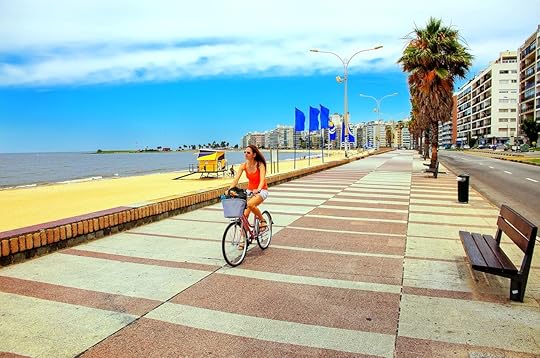
Photo: Don Mammoser/Shutterstock
What many would call a boardwalk or waterfront sidewalk is referred to as a rambla in Uruguay. According to the Oxford English Dictionary, rambla is an ancient Spanish word that refers to a dry river bed that’s used as a road, building on the Arabic word ramal, which means “sand.” While in some places, like Barcelona, the rambla doesn’t get too close to the sand — except where it ends near the waterfront — in Uruguay, a rambla runs along the shore. Every coastal city in Uruguay has its own rambla, but Montevideo’s version gives special reason to pause.

Photo: Stephanie Frias
That’s because Montevideo’s Rambla recalls its antique roots, extending to Montevideo’s outstanding historical district. The historic district was once kept under a fortress behind a wall and gateway, known as the Puerta de la Ciudadela. The wall was built in 1741 to hide the city’s fortress, standing for 135 years until it was demolished in the 19th century.
Not only are the 300-year-old historic city and its rambling sidewalk being considered for UNESCO heritage status, but Montevideo’s Rambla is also being reviewed for whether or not it can be listed as the longest continuous sidewalk in the world.
Although the study hasn’t been verified, locals are quite insistent that the research is underway. The concept is quite plausible, considering that the Rambla measures in at 22.2 kilometers or 13.79 miles, which is far longer than other sidewalks that aim to claim the title. It’s nearly thrice the length of Bayshore Boulevard in Florida and seven times longer than the Strøget pedestrian street in Copenhagen.
Twenty-three sidewalks connected by a single boardwalk

Photo: Stephanie Frias
The full expanse of the sidewalk was once called the Rambla Naciones Unidas — or “United Nations Rambla” — and many of the streets that slice through the city to meet the Rambla at the shore are named after the countries of the world. The Rambla is now divided into nine named sections and 23 segments, based on their proximity to neighborhoods, beaches, and other points of interest in Montevideo.
The pathway begins in the west along the Bay of Montevideo, curving along the coastline to meet up with the Ciudad Vieja, Montevideo’s historic old city. Then, it crosses into downtown areas known as Barrio Sur and Barrio Palermo, which rest along the massive, sea-like Rio de la Plata, the 140-mile-wide river that gushes towards the Atlantic Ocean.
The central sections of the Ramblas’ 14-mile expanse snake along Montevideo’s most popular beaches, hugging the residential neighborhoods of Parque Rodó, Punta Carretas, and Pocitos before continuing along the port to the Buceo and Malvín areas. The boardwalk ends in front of the most affluent neighborhoods of the eastside, known as Punta Gorda and Carrasco.
How to explore Montevideo’s Rambla
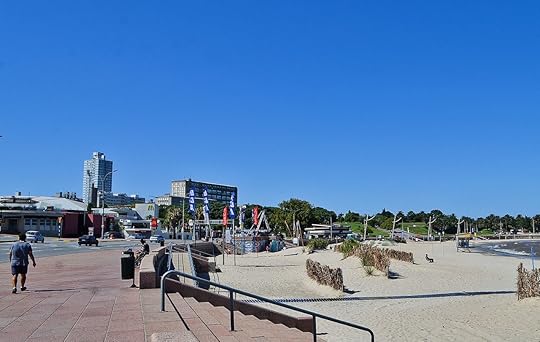
Photo: Stephanie Frias
Montevideo is one of South America’s safest cities, making it a great place to walk. The epic convergence of the cityscapes and coastline is something best appreciated on foot; however, 14 miles might be a long way to go in one day.
It’s ideal to break it up into sections by visiting the bay and historic center, then the downtown areas, and finally the east side on different days. Some excellent hotels to choose from are Alma Historica Boutique Hotel in the historic center, the Smart Hotel in downtown, or the Sofitel Montevideo Casino Carrascox and Spa Hotel on the east side.
The Rambla runs alongside Montevideo’s main avenue, but as it’s a sidewalk elevated from the street, it’s exceptionally safe for strollers, bicycles, joggers, and walkers of all ages. Many parts are divided for walking or wheels, so the likelihood of clashing with faster-paced explorers is minimal. The full expanse is very well lit at night and monitored by police in the high season, plus it runs along busy areas like shopping centers, sports fields, skating rinks, workout centers, and more.
Another popular way to enjoy the Rambla is by renting a bicycle for the day. Rent from Orange Bike, which has a shop in the historic center, allowing you to start from the west and see everything all the way east. Orange Bike has a variety of bike options from beach cruisers to three-speed bikes and mountain bikes, plus baby seats and tandem attachments for kids. Bike helmets and locks are included while tour guides are optional. Many hotels in Montevideo are affiliated with Orange Bike, allowing guests to simply bring their bike to the lobby at the end of their ride.
Must-see sights on the longest sidewalk in the world

Photo: Stephanie Frias
When it comes to things to do in Montevideo, the options are endless. From outstanding beaches to incredible museums, an unforgettable historic center to exemplary shopping malls, there is enough to explore to spend several weeks in the city.
Beyond the obvious, there are a couple of sites along the Rambla worth seeing. Start with the Montevideo sign, found in the Pocitos section, to take classic selfies above the city. Also, don’t miss the Punta Carretas Lighthouse on Punta Brava between Parque Rodó and Punta Carretas Shopping. Finally, keep an eye out for the Holocaust Memorial, the unusual Pittamiglio Castle, and the Maritime Museum of Montevideo — all located along what could very well soon be designated the longest sidewalk in the world. 

More like this: Escape the rest of winter on the beaches in Uruguay
The post Walking on the beachside Rambla in Montevideo, Uruguay, the longest sidewalk in the world appeared first on Matador Network.

Overnight at Sydney’s Taronga Zoo
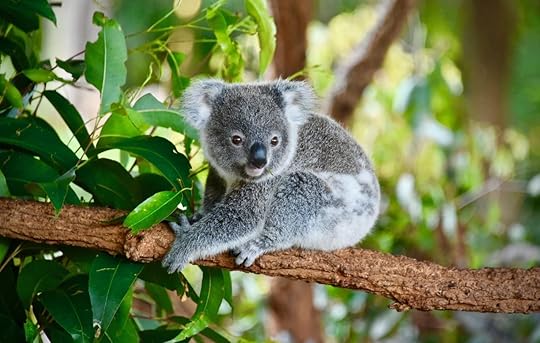
Sleeping over in an Australian zoo might sound like the beginning of a horror movie, ending with the innocent visitor being chased around by rogue snakes, but don’t let your imagination run wild. Sydney’s Taronga Zoo is offering a Wildlife Retreat, and in all likelihood, you’ll make it out in one piece. Starting in November, the retreat will allow visitors to have a sleepover at the zoo in one of five sustainable eco-pods while also learning about Australia’s conservation projects.
Once the zoo closes for the day, you will be taken on an exclusive guided tour for a behind-the-scenes view of koalas, platypuses, and sun bears, without the hassle of the crowds. You will then be able to enjoy a meal at the Me-gal restaurant, which serves dishes prepared with local ingredients. On the second day of the retreat, guests can partake in a variety of animal and cultural experiences emphasizing the country’s conservation efforts.
One of the retreat’s main goals, according to the website, is to “encourage people to spend time at the zoo learning about the unique connections between Indigenous Australians and the environment. The experience will include tours and talks that encourage engaging interactions with our native animals that will increase awareness about the threats these species face.”
Since the zoo is a nonprofit organization, all revenue generated by the retreat will contribute to the costs of conservation and breeding programs across Australia and overseas. For more information about the retreat, or to learn about pricing, email buildingbetterzoo@zoo.nsw.gov.au. 

More like this: It’s time to stop hugging koalas when you go to Australia
The post Spend the night in an eco-pod at this Australian zoo appeared first on Matador Network.

Breakfast foods in UK and Ireland
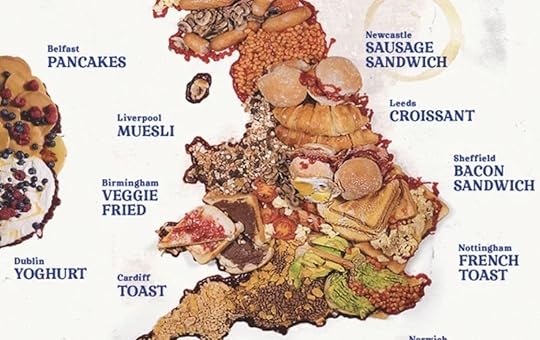
Breakfast is one of the most controversial meals of the day, especially in the UK. While eggs, pancakes, and cereal may reign supreme in most US households, the British take breakfast to a whole new level with a pretty wide and diverse range of preferred foods. From bacon sandwiches in Sheffield to a “proper fry up” in Edinburgh, it can be pretty difficult to keep all the options straight. Luckily the Great British Breakfast Survey has polled 2,000 adults in the UK and Ireland to give you the definitive answer to which breakfast foods dominate the major regions.

Photo: Scotsman Food + Drink
Nothing is more traditionally British than the classic full English, though exactly what items comprise the meal are up for debate. The five most popular items, according to the survey, were sausage, bacon, fried egg, baked beans, and mushrooms, though there are certainly regional variations. One in 10 people in Glasgow, for example, would include haggis as part of their fried breakfast while those in Edinburgh preferred black pudding. In Belfast, 40 percent of those surveyed said that potato bread was an essential part of their fried breakfast while 38 percent of Birmingham residents opted for vegetarian sausage.
With so many hearty breakfast options on the table, it is perhaps surprising that Liverpool’s top choice is muesli and Bristol’s is cereal. Leeds might have the most controversial pick, however, with 25 percent of respondents saying that they prefer plain white toast. Dublin keeps it simple as well, choosing yogurt over eggs, meat, and veggies.
Kay Knight, marketing manager at Park Resorts, said that while breakfast foods may be divisive, “There is one thing that unites us across the UK — starting the day off with a cup of tea!”

More like this: The 10 best savory breakfasts in the world
The post This map shows the most popular breakfast foods in the UK and Ireland appeared first on Matador Network.

Eiffel Tower area redesign winner
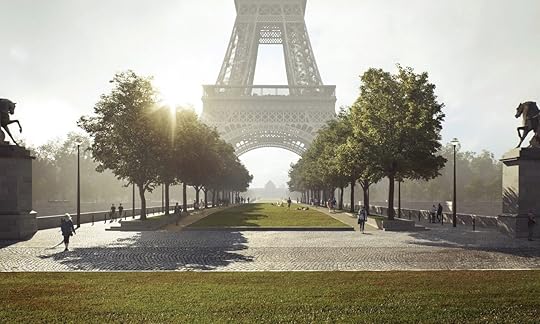
Everyone is buzzing about the competition to build Notre Dame’s damaged roof, but meanwhile, another competition has been underway to redesign the area surrounding the Eiffel Tower, and a winner has just been announced. Gustafton Porter + Bowman was selected as the winner from a total of 42 entries, with the aim of creating a landscape in line with Paris’s resilient, inclusive, and environmentally oriented mission.
Gustafson Porter + Bowman’s plan, called OnE, will cost over $44 million and is scheduled to be completed by 2023. The design calls for a unifying axis wherein the Eiffel Tower sits at the center of a line connecting the Place du Trocadéro, the Palais de Chaillot, the Pont d’Iéna, the Champ de Mars, and the Ecole Militaire. Along a central green axis, a series of landscapes will interlock, including an amphitheater of greenery, a reimagined public space in front of the Varsovie Fountains, a green promenade leading toward the gardens of the Eiffel Tower, and additional services and facilities around the tower itself.

Photo: Gustafson Porter + Bowman
The competition has been particularly meaningful to lead architect Kathryn Gustafson who studied in Paris. “Every day I passed the Eiffel Tower, on my way to a school where I was immersed in the great historic landscapes of Versailles,” she said. “The Eiffel Tower reminds me that patrimony means leaving something better for future generations. Our proposal unites a celebration of history with an enhancement of the future.”
The design is intended to combine the artistic style of classical French gardens with more modern biodiversity. It will also create plenty of space for events.
Gustafson Porter + Bowman said, “OnE embodies the international character of the site; it connects not only the site from West (Trocadéro) to East (Joffre)… OnE represents the interconnections on this site between the West and East of the world: one humanity, one planet. Therefore, OnE encapsulates a unified environmental approach towards the future.” 

More like this: 7 mouth-watering pastry shops you must check out in Paris
The post A winner has been chosen to redesign the Eiffel Tower’s landscape by 2023 appeared first on Matador Network.

What to do in Black Hawk, Colorado
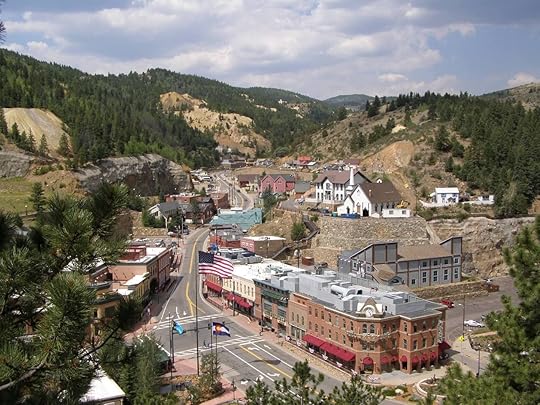
Saying that you go to Las Vegas for the “shows” is about as credible as saying you read Playboy for the “articles.” But in Black Hawk, Colorado — the state’s very own mini Las Vegas — no one will bat an eyelash when you say you went to the casino-packed small town for the “mountain air.”
Sure, Black Hawk is home to 18 casinos and only 127 permanent residents, and gambling is certainly a way of life there — but the winding mountain roads and sheer remoteness of this former mining settlement make it worth a trip even for non-gamblers.
Colorado’s least populous town is certainly an anomaly. Sitting at an elevation of 8,500 feet and surrounded by mountains, the small town doesn’t exactly fit the Sin City stereotype, and even feels like an antithesis to Vegas’ bustling streets, bright lights, and flashy aesthetic. But Black Hawk’s charm lies in its subversion of expectations, and indeed, the fact that it even exists at all does exactly that. Here’s everything you need to know about Colorado’s high-altitude Vegas.
How Black Hawk became Black Hawk
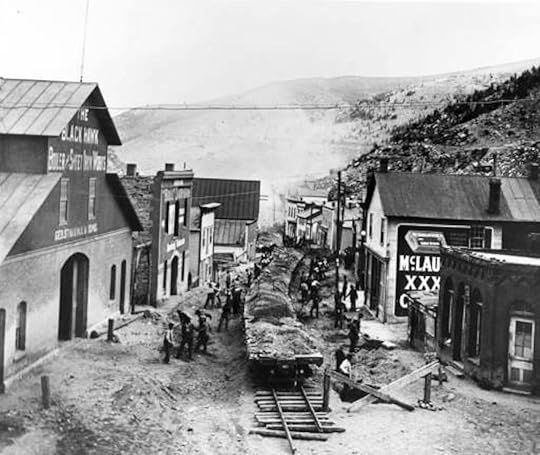
Photo: City of Black Hawk/Facebook
Black Hawk’s location might not exactly seem convenient for today’s travelers, but that wasn’t the case when it was founded back in the 19th century. Now, getting to Black Hawk requires you to drive about an hour west from Denver along Interstate 70, and then take the zigzagging Route 19 through a narrow mountainous canyon. For much of the ride you may doubt you’re going in the right direction, as a city filled with casinos sounds about as unlikely in this remote place as, well, a city of casinos in the middle of the Mojave Desert.
But after its founding in 1859, Black Hawk’s location was considered ideal by prospectors during the Gold Rush, and it quickly became a popular destination for miners and travelers. The water-powered stamp mills used to process tons of ore coming through town earned Black Hawk the nickname “City of Mills.” When the Colorado Central Railway extended its line to Black Hawk in 1872, establishing a crucial link between the town and the surrounding region, accessing this mountain town became easier than ever.
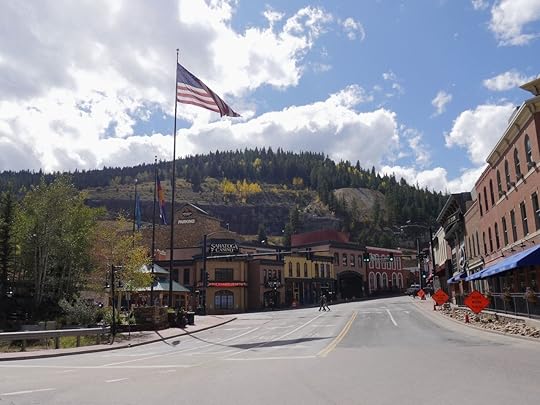
Photo: RaksyBH/Shutterstock
The decline and collapse of the mining industry during the 20th century caused Black Hawk to deteriorate, but a new industry soon took its place: casinos. Decades of economic decline in Colorado led to the passage of a ballot measure in 1991 that allows limited-stakes gambling in the state. What started with the opening of two small casinos in historic Black Hawk buildings has since become a booming industry, with 18 casinos generating over $20,000 of revenue per day.
Black Hawk may not be a Gold Rush town anymore, but millions of people are still visiting with the hope of striking it rich. What makes Black Hawk truly unique — particularly among ex-mining towns — is that the casino industry didn’t just have a profound economic impact on the town; it also transformed the city’s identity completely. Although situated in a narrow valley between the mountains, where open space is not in abundance, the casinos’ popularity has resulted in the entire town being rebuilt and reconfigured. Roads, utilities, retaining walls, and other aspects of Black Hawk’s infrastructure have been built and organized to facilitate casino traffic. Historic homes have even been relocated away from new casino development and onto newly built hillside neighborhoods.
How to do Black Hawk right

Photo: Ameristar Casino Resort Spa Black Hawk/Facebook
If you’ve never heard of Black Hawk before, you might expect to find a few gas stations or — if you’re lucky — a roadside cafe, while traveling along the remote and winding Route 70. When high-rise hotels peek out from behind the mountains, and glittering casino signs appear out of nowhere, it can be a bit jarring; but that’s part of the city’s bizarre charm. Black Hawk has plenty of upscale restaurants, buffets, hotels, and bars to make you feel like you’re on the Strip — just 8,500 feet up in the mountains.
The largest hotel in Black Hawk is the Ameristar, with a spa, rooftop pool and hot tub, and of course, a sprawling buffet. If you’re really looking to pack away the calories, you can feast at the hotel’s Centennial Buffet, but for a little fresh air and a break from the casinos, head to the Buffawhale Coffee & Tea Company. Located right down the street from the Saratoga Casino, this cafe is the perfect morning pit stop, with a variety of breakfast burritos and tacos.

Photo: Colorado Parks & Wildlife
When you really need a casino break — or when you’ve lost all your money — the Golden Gate Canyon State Park is just 10 miles away. Regardless of your luck at the craps table, a trip to this state park will make sure your weekend in Black Hawk is filled with good memories. The park has over 35 miles of trails for hikers, horseback riders, and mountain bikers, with the 7.4-mile Mule Deer Trail being one of the most popular. It’s the ideal vacation from your vacation, especially when you start seeing spinning slot machine columns in your sleep.
A sister city of sin

Photo: RaksyBH/Shutterstock
For casinos that are reminiscent of the area’s old mining heritage, head five minutes down the road to Central City. Like Black Hawk, Central City is an old mining town turned gambler’s paradise, though zoning rules ban the high-rise casino hotels you’ll find in Black Hawk. The result is more casinos housed in original historic buildings, and far fewer massive hotel complexes. With only six, smaller casinos in Central City, the place lacks Black Hawk’s quasi-Vegas vibe, and feels more in touch with its mining roots.
Although Central City was initially expected to be the area’s most popular casino destination, Colorado’s State Highway 119 passes through Black Hawk first, making it more convenient for travelers. Central City is worth driving the extra two miles for those who prefer a more laid-back mountain vibe. The city’s Main Street is reminiscent of a Wild West movie, but luckily you won’t have to worry about any spontaneous shootouts taking place in the middle of the road.
Be sure to take a tour of the Hidee Gold Mine. Located in Virginia Canyon right outside Central City, and just a 10-minute drive from Black Hawk, the gold mine has been intermittently operational since 1896. Tours are led by miners with intimate knowledge of the mine and of the area’s history, and you’ll even be able to try gold panning — the process of using a pan to sift for gold. Check out the range of tour options, and reserve an experience online. 

More like this: 7 wacky museums in Las Vegas you need to check out
The post Black Hawk, Colorado, is a mini Las Vegas in the mountains appeared first on Matador Network.

Filippino students must plant trees
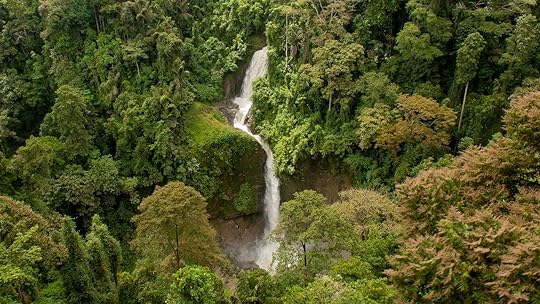
In the US, graduating high school and college means passing all your core classes. In the Philippines, getting straight As isn’t enough — you also have to plant at least 10 trees before you’ll be allowed to graduate. There is already a Filipino tradition of planting trees upon graduation, but this new law turns that tradition into a requirement, designed to fight climate change.
Gary Alejano, the Magdalo Party representative who was the principal author of the legislation, said, “With over 12 million students graduating from elementary and nearly five million students graduating from high school and almost 500,000 graduating from college each year, this initiative, if properly implemented, will ensure that at least 175 million new trees would be planted each year. In the course of one generation, no less than 525 billion can be planted under this initiative.”
The trees will be planted all over the country, in mangroves, existing forests, protected areas, abandoned mining sites, urban areas, and even military ranges. The specific tree species must be appropriate for each location, taking climate and topography into account. Since the Philippines is among the world’s most seriously deforested countries, plagued by illegal logging, the new law is intended to give future generations a sense of appreciation for the environment. 
H/T: Independent

More like this: The Japanese practice of ‘forest bathing’ can actually lower your blood pressure
The post The Philippines will require students to plant 10 trees each before graduating by law appeared first on Matador Network.

Mammoth Mountain open until August

You don’t typically think of August as being “ski season,” but this year it just might be. Thanks to a record 29 inches of snowfall this month, California’s Mammoth Mountain has just announced that it will remain open daily until August. This is the snowiest May ever recorded at Mammoth, and while those waiting for summer might be tapping their feet impatiently for the warm temperatures, skiers are reveling in three extra months of winter.
The 29 inches of snow this month make a total of 715 inches at the summit this season, with the most recent storm hammering the mountain with nine to 10 inches. Indeed, California isn’t often associated with record snowfall, but Mammoth’s summit received one of the highest snow totals in the country for this winter. The ski season has only lasted until August twice before at Mammoth — in 2017 and 1995 — so while it’s certainly a rarity, skiers are hoping that it becomes a trend.
View this post on InstagramA post shared by Mammoth Mountain (@mammothmountain) on May 24, 2019 at 2:37pm PDT
And the month isn’t over yet. With a few days left in May, surprise snowfall could add to the already staggering total, and make the record even more impressive. Who knows, another few inches and we might even be skiing into Halloween. 
H/T: Unofficial Networks

More like this: Ski resorts across North America are finally opening up their backcountry
The post Mammoth Mountain will be open until August after record snowfall appeared first on Matador Network.

Best places to travel in India
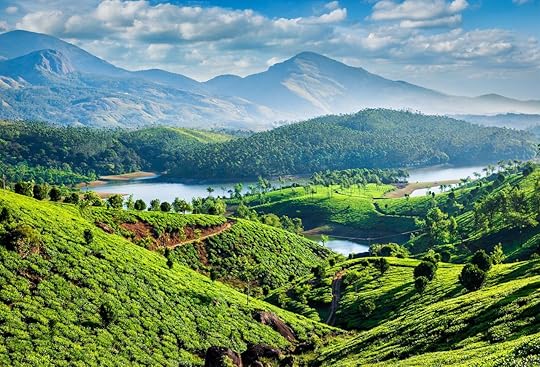
The monsoon season in India begins in early June, peaks in July, and comes to an end in September. Many coastal areas can be unpredictable, with torrential rains making sightseeing and leisurely activities essentially impossible. On some days, there’s only very little rain, particularly in parts of northern India, which generally means sweltering temperatures and humidity levels that are almost unbearable. There’s also an omnipresent risk of landslides — leading many travelers to skip the north and northeastern mountains. India is huge, however, with diverse topography and a number of destinations that are prime for escaping the monsoon rains. From snow-clad Himalayan peaks to mist-laden green valleys where you can chase the tropical rain with swelling rivers, here is where to travel in India during the monsoon season.
The tea plantations in Munnar

Photo: Mazur Travel/Shutterstock
Carpeted in wet-green tea gardens and located in the Western Ghats mountains, Munnar is a major tea cultivation region in Kerala. This city in the southwest of the country is a popular honeymoon destination because of the rolling green hills and its reputation as a hub for wellness retreats and relaxation. During monsoon season, the rains create seasonal changes in the landscape. This time of year, the higher water levels create temporary streams in the undulating paths of the tea gardens. The hills are enveloped in mist, and the area kind of looks like the setting for a new Shrek movie.
Get out for a hike to get a feel for the area. Follow the zigzag path from the edge of town to Kolukkumalai’s tea plantations, where you can learn about the process of tea production over a hot cup of chai. This hike can be done in a morning, but if you’re up for a full-on trek, a 20-mile hike from Munnar takes you to Top Station in the Kurangani Hills. You can camp overnight and return the next day, and guided trip options are available through Munnar Tent Camps. On your way back, stop by Kundala Lake for a boat ride. As with much of Kerala, there are also options for the wellness-minded traveler in Munnar. If a disconnect and rejuvenation session is in order, opt for an ayurvedic holiday at Tea Country Resort.
Coorg, Karnataka
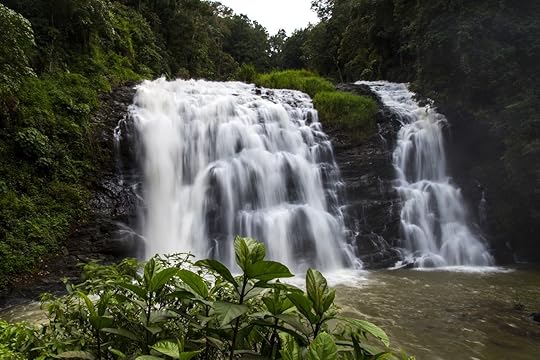
Photo: Hiren Ranpara/Shutterstock
North of Kerala is the state of Karnataka. The region of Coorg in the western part of the state is India’s coffee country. To clear up any confusion, you’ll also hear Coorg referred to as Kodagu — they are the same place. It takes five hours to reach Coorg from the state capital of Bangalore, where you’ll likely fly in as it’s home to the closest major international airport. During the monsoon season, the rain-fed cascades of Coorg come to life. Abbey Falls, within a thick coffee plantation, are the most popular among visitors. The falls are located north of the town of Madikeri and are easy to access as they’re just off the aptly named Abbey Falls Road and have a large viewing bridge. You can also visit Iruppu Falls, Chelavara Falls, and Mallalli Falls while you’re at it; they’re accessible by Madikeri, which is also where the ancient Madikeri Fort is located. Coorg is home to a Tibetan settlement, so expect plates full of sizzling steamed momos whenever you stop to eat. Visit the Golden Temple inside Namdroling Monastery, which is home to nearly 5,000 monks and nuns. Backpackers can stay at Zostel Coorg, but for a more luxurious experience, stay at the Club Mahindra Coorg resort.
The Valley of Flowers in Uttarakhand
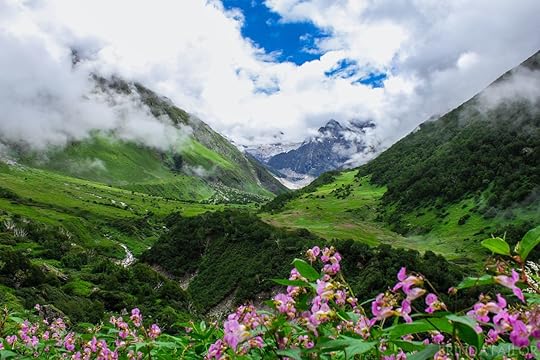
Photo: Brinda Tailor/Shutterstock
If you do stay up north, the state of Uttarakhand is the place to be. In particular, the Valley of Flowers. A UNESCO World Heritage site, the Valley of Flowers is a national park located in Uttarakhand’s Chamoli district. Sheltered by snow-capped mountains, the entire valley blooms with the arrival of monsoon rains. From mid-July to mid-August, the gorge over the Pushpawati River is covered with alpine flowers in different shades of pink, though you’ll have to trek about 11 miles from the nearest town, Joshimath, in order to see them. It’s worth it though — the trek passes through the mountain villages of Govindghat and Ghangaria to reach the valley, both of which are popular among outdoor enthusiasts and history buffs. Dehradun Airport in the Garhwal Himalayas is the nearest airport. Once you reach Joshimath, stay at the Himalayan Abode, a homestay with stunning views of the mountains.
The hill country outside of Mumbai

Photo: Surinder Sharma/Shutterstock
When the monsoon season arrives, the hill regions in the massive state of Maharashtra come alive. This state is home to Mumbai, India’s largest city, but you should head south to Mahabaleshwar. Known officially as a “hill station,” Mahabaleshwar is five hours from Mumbai and essentially operates as a regional hub in the Western Ghats mountains. The area is popular for its strawberry farms and you’ll find a variety of resorts and homestays far removed from the chaos of the monsoons. The draw here — beyond the strawberries — is easy access to outdoor pursuits. Another trek worth doing for a harder workout is up to Tapola, a lake and river destination about 16 miles from Mahabaleshwar where you can rent a cabin to camp overnight. Don’t forget to enjoy a strawberry milkshake at Mapro Garden. There’s also a small hamlet named Bhilar, India’s first book village.
Closer to Mumbai, Lonavala is a popular hill station this time of year due to the ease of adventure access and no shortage of epic photo opportunities. Outdoor enthusiasts can visit Bhaja Caves and Kune Falls to do a bit of day trekking. Matheran is another hill town where you can trek to Panorama Point to see the stunning view of the Western Ghats in the distance.
The beach towns of Goa
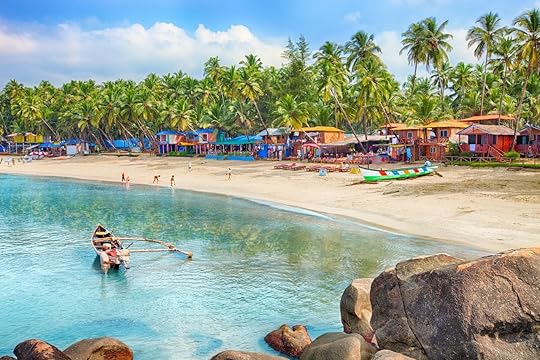
Photo: Lena Serditova/Shutterstock
Goa, a coastal state on the western coast, is popular for its beaches and party scene. The monsoons do touch Goa, though in a far quieter manner than many other coastal areas of India, and the rains that accompany actually bring tranquility to the Goan countryside that isn’t found during the rest of the year. Visiting Goa during monsoon season is a travel hack of sorts because the sun-soaking tourists that visit throughout the rest of the year have vanished. Many resorts offer off-season deals and you can hop on a bike and ride through the charming hamlets normally lined with people, surrounded by paddy fields not far from the beach. One of the most popular sites near Goa is the nearly 2,000-foot-high Dudhsagar Waterfalls in the eastern part of the state. When a train passes by, the alive-and-breathing falls create a spectacular backdrop. The trek to the falls isn’t strenuous, but it can be quite slippery with the rains.
Mount Abu in Rajasthan
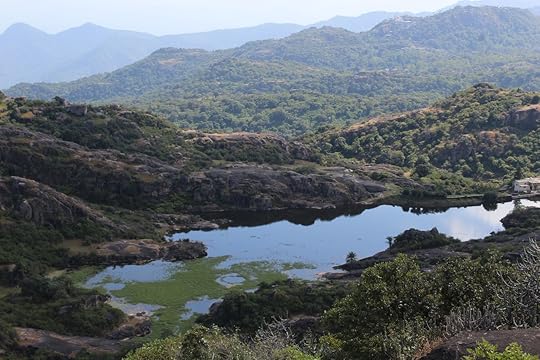
Photo: A5logics/Shutterstock
Many popular tourist spots in Rajasthan are scorching hot from June until September. One exception to this rule is Mount Abu, the only hill station in the state. Here you’ll find pleasant weather and clear skies even during the monsoon period. Get up to Guru Shikhar and take in the highest point of Mount Abu, with a panoramic view of the mountains beyond the hill station. Trekkers head to Aravalli Range or Sunset Point for a sunset that rivals all others in the country. For culture enthusiasts, Dilwara Temple is a Jain temple with impeccable architecture. The Palace Hotel, which was a high-end British residence during colonial times, is ideal to stay in for a few days at Mount Abu. 

More like this: Why Kolkata offers the ultimate blend of classic and contemporary culture in India
The post Where to travel in India during monsoon season appeared first on Matador Network.

7 family adventures in Idaho
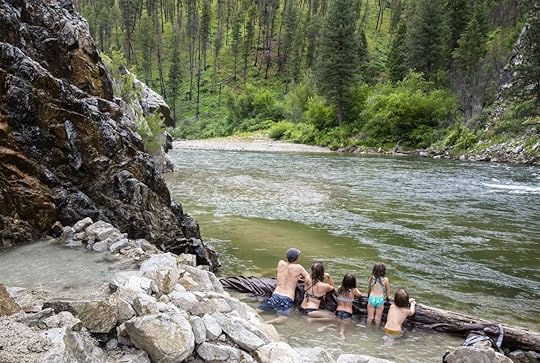
Let’s be real: Cooking s’mores around the fire or enjoying a summer day at the lake can be adventure enough for a family trip. But if you want to give your little ones a bit more of thrill — something they can brag to their friends back home about — you need to get to Idaho.
In this guide to the Gem State, we’ll go from ziplining 400 feet above the forest floor to taming whitewater rapids in the deepest river gorge in America. Take one or take them all — here are seven kid-friendly Idaho adventures for your next family vacation.
1. Ziplining in Coeur d’Alene
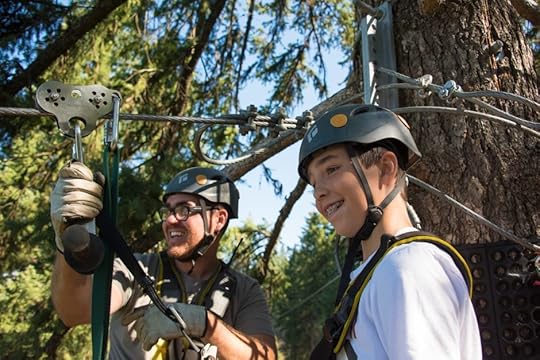
Photo: Timberline Adventures
You’ll find zipline tours are all over Idaho — the state has so much gorgeous scenery, and this is one heck of a way to take it all in — but Timberline Adventures in Coeur d’Alene knows the way to our ziplining hearts is through our stomachs. That’s right, they serve mid-flight s’mores at sunset in a treehouse!
This summertime special is limited to Friday and Saturday evenings. If you can’t make it then, know that they also offer a Treehouse Lunch Adventure that has more availability. And of course, the aerial adventure itself — seven ziplines and two suspension bridges over the forested hills surrounding Beauty Bay on Lake Coeur d’Alene — happens every day of the week. Note: Participants must be at least 7 years old and weigh between 80 and 260 pounds.
2. Whitewater rafting on the Salmon River
Central Idaho’s Salmon River takes the cake when it comes to the state’s 3,100 miles of whitewater. It’s also known as the River of No Return — which should provide sufficient mystique if your kids are waffling on the idea of paddling.
Many of the companies that run tours on the Salmon offer a family-focused itinerary, but ROW Adventures’ Family Magic Rafting Trip actually requires that participants be accompanied by their children (minimum age of 5)! You’ll spend four or five days exploring white sandy beaches, Indian petroglyphs, and old pioneer settlements, with meals provided and special activities offered for the kids.
You could also tackle a wilder upstream section with ROW’s Middle Fork Salmon River trip in the Frank Church River of No Return Wilderness — a guaranteed thrill for older kids.
3. Getting off the grid in the Sawtooth Mountains

Photo: Sawtooth Mountain Guides
Roughly 40% — or 20 million acres — of Idaho falls into one national forest or another, with some 4.5 million acres designated as protected wilderness. With a backpack and a sense of adventure, it doesn’t take long here to get off the beaten path and explore a deep forest trail or high mountain ridge, making lifelong memories in the process.
The Sawtooth Range near Stanley is one of the most popular adventure destinations in Idaho, and Sawtooth Mountain Guides has been helping families explore the area since 1985. They offer hiking and fishing trips as well as a full-on Alpine Kids Camp (for ages 12-16) — but you can also customize an adventure to fit your family’s needs and schedule.
Exploring the area on your own is also definitely doable. Just check in at the Stanley Chamber of Commerce for maps and adventure tips before heading out. And get ready — with wilderness like this, your kids will be hooked for life.
4. Powering your way through Hells Canyon in a jet boat
Defining the border between northeastern Oregon and Idaho, the Snake River carves out the 7,933-foot-deep Hells Canyon, America’s deepest river gorge. And we’re not talking deepest by any small margin — it’s nearly 2,000 feet deeper than a certain famous canyon in Arizona.
One of the best ways to ride the whitewater rapids of Hells Canyon is to power through them in a jet boat — first upstream, then turning around and hitting them again! Scout out a tour company like Killgore Adventures, a family-owned and -operated jet boat touring company that knows Hells Canyon like their own backyard.
5. Scaling the walls at City of Rocks
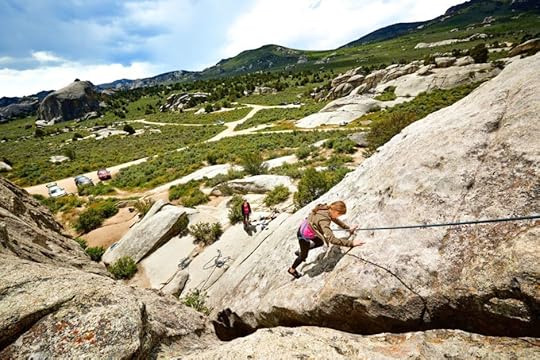
Photo: Idaho Tourism
If going vertical is more your style, head down south to the town of Almo, near the Utah border in southern Idaho. The nearby City of Rocks National Reserve once served as an important signpost for migrants moving west on the California Trail. Today, it’s rock climbers of all skill levels who hope to catch sight of these distinctive formations.
The Idaho Department of Parks and Recreation offers a Climbing Experience Program for adventurers just getting started. With climbs ranging from 30 to 600 feet, from moderately easy to extremely difficult, City of Rocks is a great place to introduce your kids — and your cousins and your parents — to the rock-climbing world.
6. Taking a horseback ride into the wilderness
Nothing captures the spirit of Idaho quite like exploring mountain slopes and open fields on horseback. A licensed Idaho outfitter will help your family safely explore Idaho’s pristine wilderness areas, showing you trails they know by heart, and trips can often be customized to fit your needs and experience level.
In the town of Stanley, Mystic Saddle Ranch specializes in introducing beginners to wilderness trips in the Sawtooth Wilderness, while Pioneer Outfitters will take you into the neighboring White Cloud Mountains.
7. Mountain biking from one hot spring to another
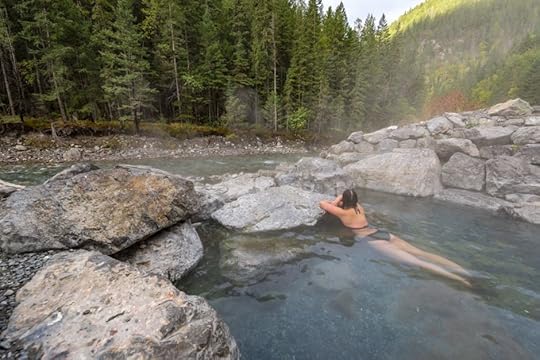
Photo: Escape Adventures
Two more characteristics that set Idaho apart in the adventure category: exceptional mountain biking trails and glorious hot springs. And Escape Adventures has the perfect way to experience both at once, with their Idaho Hot Springs Intro Tour.
For five days, they’ll guide your family on two wheels from one delightful hot spring to another through the Sawtooth backcountry in southern Idaho. And if cruising around hot springs isn’t adventurous enough for you, check out their Idaho Hot Springs Multi-Sport adventure — six days of hiking, biking, and whitewater rafting mania. This one’s a whole Idaho vacation in itself! 
The post 7 kid-friendly Idaho adventures for your next family vacation appeared first on Matador Network.

May 28, 2019
What is Cartagena, Colombia, like
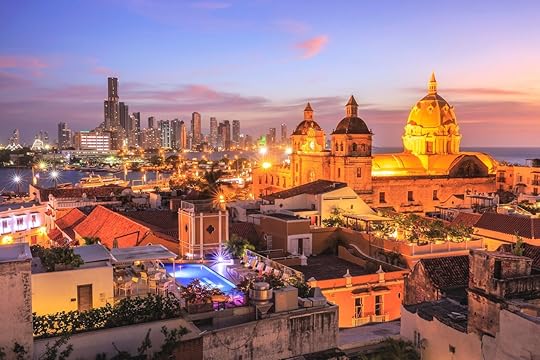
I made it about 75 feet from my hotel before someone offered me cocaine.
“Italian food, fresh Italian food,” a bald man yelled at me from a storefront along Calle Larga. “You hungry? See the menu.” He pushed the menu in my face in case I was confused what Italian food was.
“I’m good,” I said politely as I tried to hurry past.
“You want coke?” he asked, like this was the obvious follow-up question to turning down questionable steak pizzaiola. “I got the good shit man, 97%. Puro!”
“Good on that too,” I said walking away.
“Best price you’re gonna find,” he yelled after me. “Half what you pay in America.”
In my first hour in Cartagena, I’d found cocaine before I could find bottled water.
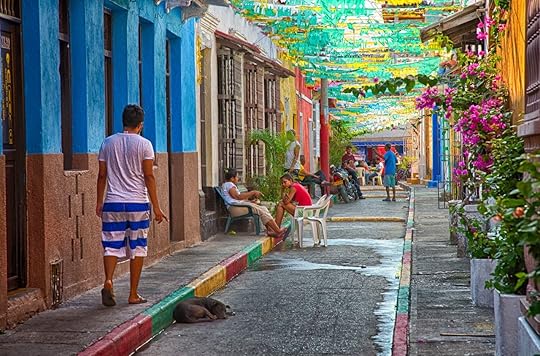
Photo: Gary C. Tognoni/Shutterstock
My hotel was not in a bad neighborhood, either. Or even what we might euphemistically call “transitional.” I was at the Selina — a sort of high-end youth hostel/boutique hotel hybrid — settled in the Getsemani district just outside the old city. It’s a neighborhood full of street murals and small local restaurants where people who look like young locals fill the plazas and pizza joints on weekends. It’s the perfect place for a hotel like Selina with its rooftop yoga, kale smoothies, and multi-level coworking space. But still, apparently, very much the Cartagena everyone back in Miami had told me about.
For folks who live in South Florida, Cartagena is both closer and cheaper than Las Vegas, the weekend getaway of choice for a little “what happens here, stays here” action. My image of the place had been formed not by 1990s news reports but by stories like my friend who linked up with a bachelor party and found herself at a villa filled with tables of cocaine and naked prostitutes.
“I definitely made some very bad decisions in Cartagena,” she told me.
A different friend usually couldn’t leave his house for two or three days after Cartagena weekends.
It was Sin City, without the rules, at half the price.
For someone who’d never been to this colonial gem on the Caribbean coastline, it’s a confusing narrative. Travel publications paint it as a historic Latin American paradise, like Havana if anyone had bothered painting it since the ‘60s. A direct contrast to the uninhibited shitshow I’d heard about.
So I spent nearly a week in Cartagena figuring out which one was closer to the truth — and found Cartagena somehow manages to be both. It’s a place full of world-class cocktail bars and fine dining steakhouses, history and beach clubs and funky little arts districts. It’s cleaned up, yes. But it only takes 75 feet to know it’s still a place to do things you’ll never speak of back home.
A historic old city becomes one of the world’s best places.

Photo: Jess Kraft/Shutterstock
If you’re not up on the history of Spanish colonialism, Cartagena de las Indias was settled by Spain in 1533, named to differentiate it from the Spanish city of the same name. The natives who fled during Spanish conquests left behind vast amounts of gold, which tempted pirates sailing in the area. After French Pirate Robert Baal successfully raided Cartagena, and Francis Drake followed with another invasion, Spain ordered protective walls built around the city. Between about 1600 and 1796, seven miles of walls were built around the city. Most remain standing.
Today, instead of guarding against pirates, the walls are a place to enjoy the Caribbean sunset with a cold drink. Café del Mar is tourists’ preferred walltop bar, where you can sip a glass of rosé with views of the sparkling new Boca Grande skyline. El Baluarte San Francisco Javier, about 300 yards down the walls, is equally lovely with smaller crowds and live music.
Inside the walls of the old city, you’ll find the grandest example of Spanish colonial architecture in the Caribbean, where colorful buildings line narrow streets filled with grand homes and elaborate door knockers. The streets have a palpable, compacted energy that’s forced together over the slender cobblestone streets, reverberates off the stone walls, and explodes from the rooftops in the form of cocktail bars.

Photo: Alquímico/Facebook
Chief among them is Alquimico, a multi-level, chemistry-themed alcohol palace where you can sip on Painkillers in a pineapple or try original drinks named after different Colombian cities. Across the street on another rooftop, you’ll find live music on multiple levels at La Jugada Club House, where drinks are also expertly crafted. There’s also El Arsenal: The Rum Box and El Baron, two ground-level cocktail bars with drinks on par with anything in New York. And you can dance salsa until sunrise at Café Havana.
If those spots are too upscale, drinking cheap in the old city is even easier. Hawkers with coolers will happily sell you cold cans of Aguila, the Colombian equivalent of PBR minus the hipster baggage, for $1. The old city might also have the highest concentration of souvenir refrigerator magnets of any place in the world. And in between cracking your beers and helping you find the perfect souvenir for your Aunt Cindy, many hawkers might also try and sell you cocaine.
All this is wrapped around centuries-old history, the likes of which are hard to find without crossing an ocean. Cartagena is home to some of the Americas’ most impressive cathedrals, like the iconic St. Catherine of Alexandria, the old city’s most noticeable landmark, or the Iglesia de San Pedro Claver, also in the old city. Cartagena was also home to a tribunal for the Spanish Inquisition, whose former home is now the city’s history museum. Overlooking it all on a hilltop you’ll find the Castillo San Felipe de Barajas, a castle dating back to the 1500s. Above that on Cartagena’s highest point is the Convento de la Popa, a mountaintop monastery that’s been restored to its seventh-century glory.
Cartagena mixes the clean with the not-so-clean, and it works.

Matador Network's Blog
- Matador Network's profile
- 6 followers



